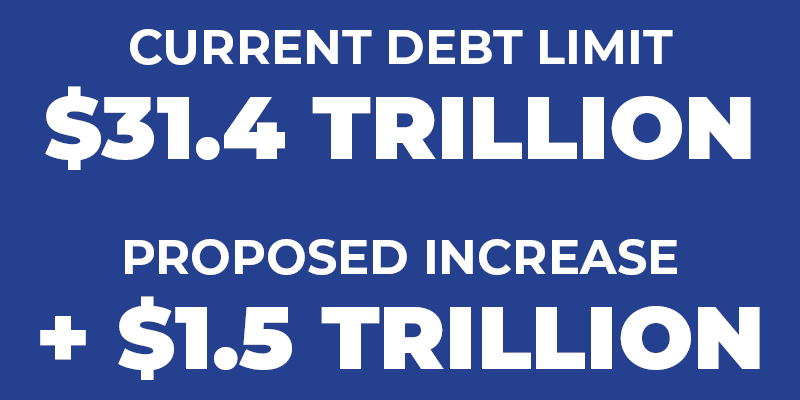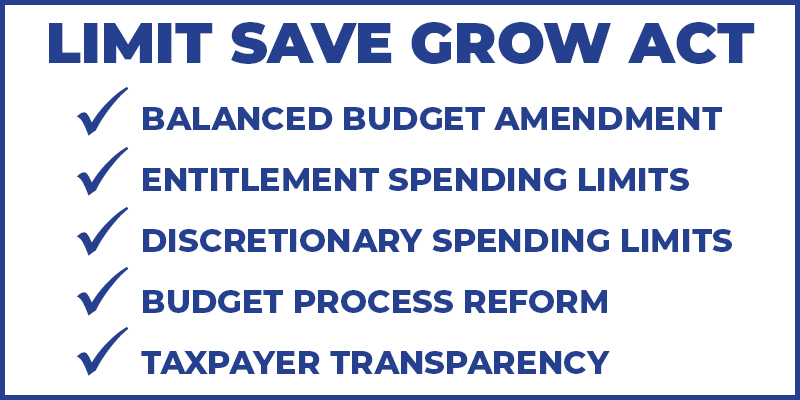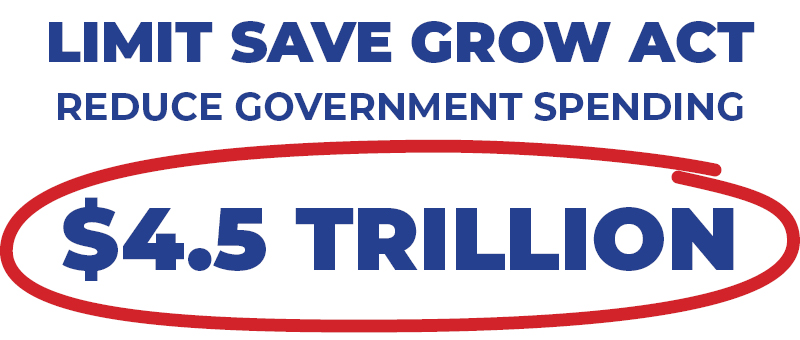The game of chicken being played in Washington, D.C. over next year’s federal budget and the debt ceiling is the latest example of why we are glad to do our work in Iowa, not the nation’s capital. While President Joe Biden seemingly wants to be handed a blank check for federal spending, Speaker Kevin McCarthy and House Republicans are demanding new fiscal restraints before they approve a change to the debt ceiling.
Even though the debt ceiling isn’t something most of us stop to consider, it’s not a difficult concept to understand. The debt ceiling is simply a limit set by Congress on how much money the United States government can borrow to pay its bills, serving as a cap on the amount of national debt that the Treasury Department can issue. When the government reaches the debt ceiling, it cannot borrow any more money to fund its operations. This can theoretically lead to a government shutdown or default on its debt obligations.

In the past, Congress has raised the debt ceiling many times (78 times since 1960 alone) to avoid one of those outcomes; it was most recently increased to $31.4 trillion in 2021. Currently, negotiations to raise the debt ceiling by another $1.5 trillion are centered around the Limit Save Grow Act, which House Republicans authored. In exchange for approving the increase, House Republicans are pushing for the enactment of their bill which aims to rein in government spending by setting strict limits on discretionary spending and implementing budgetary reforms.

The Limit Save Grow Act is divided into five parts, or divisions:
Division A: The Balanced Budget Amendment
This division would require Congress to pass a balanced budget amendment to the U.S. Constitution. This amendment would prohibit Congress from spending more money than it takes in, except in times of war or national emergency.
Division B: The Mandatory Spending Limits Act
This division would impose mandatory spending limits on all federal programs, including entitlements like Social Security and Medicare. These limits would be set at the 10-year average of each program’s spending, adjusted for inflation.
Division C: The Discretionary Spending Limits Act
This division would impose limits on discretionary spending, which is spending that is not mandated by law. These limits would be set at the 10-year average of discretionary spending, adjusted for inflation.
Division D: The Budget Process Reform Act
This division would reform the budget process by requiring Congress to pass a two-year budget resolution instead of the current one-year resolution. It would also require Congress to pass a separate appropriations bill for each federal agency.
Division E: The Taxpayer Transparency Act
This division would require the federal government to disclose all federal spending on a public website, including information on how much money is spent on each program and project, as well as the names of the contractors and recipients of federal funds.
House Republicans want to accomplish a balanced budget by reducing government spending (we like the sound of reducing government spending!) by $4.5 trillion over time, and they believe the Limit Save Grow Act can help achieve this goal.

Speaker McCarthy has a very thin majority in the House and had to continually tweak and change the bill in order to ensure its passage by his members. One of those changes, for instance, was the restoration of ethanol tax credits to satisfy many Midwestern Representatives. Despite the legislation passing out of the House, Senate Majority Leader Chuck Schumer and President Biden are opposed to the bill, so it’s virtually guaranteed not to be signed into law.
What is more likely, and what fiscal conservatives in Congress are hoping for, is that some of the tenets of the Limit Save Grow Act are in fact implemented or otherwise used to craft the federal government’s next budget.
Here in Iowa, these battles over how much debt to take on are almost foreign to us. Iowans are used to budget battles between lawmakers of opposing parties or between dueling House and Senate proposals. In recent years those debates have tried to determine how much fiscal restraint to implement, not how much more debt should be piled onto the backs of Iowa families and businesses.
As most ITR Foundation members know, Iowa has spending limits written right into its code, with lawmakers unable to spend more than 99% of available revenue. Even though we are always interested in additional checks on government’s ability to grow its own budget, Iowans can rest assured that their state government won’t be on the verge of defaulting on its financial commitments.
